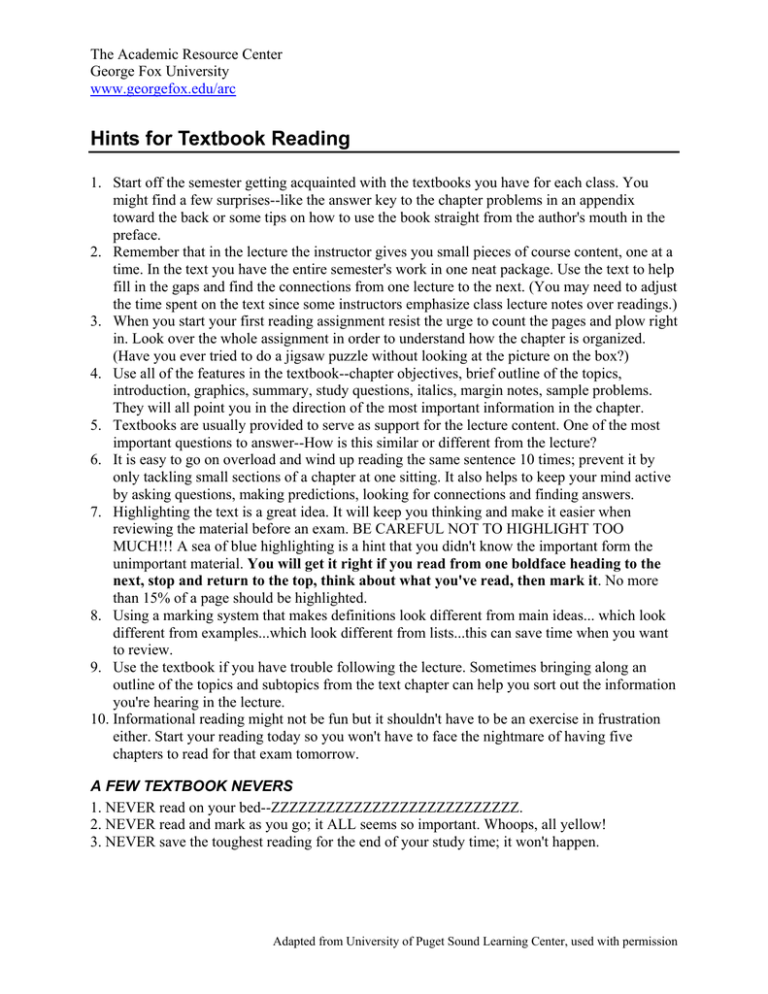Hints for Textbook Reading
advertisement

The Academic Resource Center George Fox University www.georgefox.edu/arc Hints for Textbook Reading 1. Start off the semester getting acquainted with the textbooks you have for each class. You might find a few surprises--like the answer key to the chapter problems in an appendix toward the back or some tips on how to use the book straight from the author's mouth in the preface. 2. Remember that in the lecture the instructor gives you small pieces of course content, one at a time. In the text you have the entire semester's work in one neat package. Use the text to help fill in the gaps and find the connections from one lecture to the next. (You may need to adjust the time spent on the text since some instructors emphasize class lecture notes over readings.) 3. When you start your first reading assignment resist the urge to count the pages and plow right in. Look over the whole assignment in order to understand how the chapter is organized. (Have you ever tried to do a jigsaw puzzle without looking at the picture on the box?) 4. Use all of the features in the textbook--chapter objectives, brief outline of the topics, introduction, graphics, summary, study questions, italics, margin notes, sample problems. They will all point you in the direction of the most important information in the chapter. 5. Textbooks are usually provided to serve as support for the lecture content. One of the most important questions to answer--How is this similar or different from the lecture? 6. It is easy to go on overload and wind up reading the same sentence 10 times; prevent it by only tackling small sections of a chapter at one sitting. It also helps to keep your mind active by asking questions, making predictions, looking for connections and finding answers. 7. Highlighting the text is a great idea. It will keep you thinking and make it easier when reviewing the material before an exam. BE CAREFUL NOT TO HIGHLIGHT TOO MUCH!!! A sea of blue highlighting is a hint that you didn't know the important form the unimportant material. You will get it right if you read from one boldface heading to the next, stop and return to the top, think about what you've read, then mark it. No more than 15% of a page should be highlighted. 8. Using a marking system that makes definitions look different from main ideas... which look different from examples...which look different from lists...this can save time when you want to review. 9. Use the textbook if you have trouble following the lecture. Sometimes bringing along an outline of the topics and subtopics from the text chapter can help you sort out the information you're hearing in the lecture. 10. Informational reading might not be fun but it shouldn't have to be an exercise in frustration either. Start your reading today so you won't have to face the nightmare of having five chapters to read for that exam tomorrow. A FEW TEXTBOOK NEVERS 1. NEVER read on your bed--ZZZZZZZZZZZZZZZZZZZZZZZZZZZ. 2. NEVER read and mark as you go; it ALL seems so important. Whoops, all yellow! 3. NEVER save the toughest reading for the end of your study time; it won't happen. Adapted from University of Puget Sound Learning Center, used with permission











